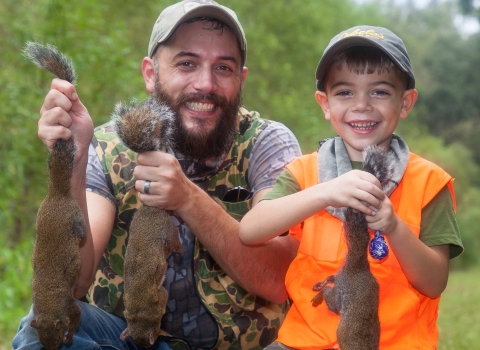Visit Us
Bayou Teche National Wildlife Refuge conserves over 9,000 acres of once-vast coastal bottomland hardwood forest and bald cypress-tupelo swamp habitats. Whether you enjoy paddling, fishing, wildlife viewing, hiking or hunting – Bayou Teche has an outdoor recreation opportunity for you!
Location and Contact Information
About Us
Located in the heart of the “Cajun Coast,” Bayou Teche National Wildlife Refuge, established in 2001, sits along Bayou Teche, an ancient channel of the Mississippi River. The refuge consists of mostly swamp located behind the natural levees of the bayou between Franklin, Centerville, and Garden City, LA. Our primary objective at the refuge is to support the Louisiana black bear by restoring and managing bottomland hardwood forests, cypress-tupelo swamps, bayous, and marshes to ensure high quality, diverse habitat.
Many other plants and animals benefit from conservation of these habitats. The refuge's location close to the Gulf of Mexico makes it an important landscape for neotropical songbirds during migrations between the northern and southern hemispheres.
The refuge is the homeland of the Chitimacha Tribe.
What We Do
Wildlife conservation is at the heart of what we do. It drives the work we do on lands and waters managed within the National Wildlife Refuge System, from the purposes for which a refuge is established, to the recreational activities offered, to the resource management tools used. Using conservation best practices, the Refuge System manages Service lands and waters to help ensure the survival of native wildlife species. Our staff use a variety of resource management techniques to maintain, recover or enhance plants and wildlife and the habitats they rely on.
Our Species
The Louisiana black bear is a unique southern subspecies of the American black bear. Bayou Teche National Wildlife Refuge was established to provide critical habitat and refuge for this subspecies.
Projects and Research
Bayou Teche National Wildlife Refuge is managed to provide food, cover, travel corridors, and den sites for Louisiana black bears. We work with local schools and community groups to plant trees and native plants and restore former sugar cane fields to forested habitat and cane brakes to provide food and shelter for wildlife.



